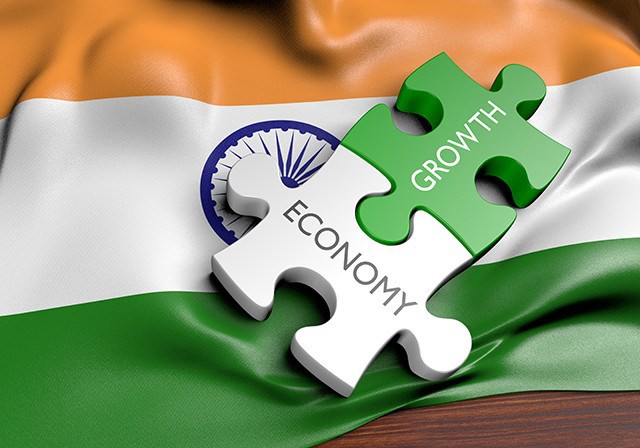By: Dr. Upsham Goel, Chief Consulting Editor, ICN Group
The Views are of the author and do not represent views of ICN or it’s staff.
For the first time in decades, India is getting truly ready to get into the next century.
Let’s look at some of the analytics which will show us where we are headed to :
One : India has the Largest population of young citizens – more than any other country, unlike the aging population of China – a key factor in driving growth.
Two : India’s GDP has a robust growth rate of above 6% and rising, while China has already fallen below 6%. In addition, India under Modi, is already among USA’s most preferred trading partners, and is likely to be poised for greater growth, whereas China’s increasingly belligerent attitude isn’t winning it any friends, and with USA tightening its trade borders, may result in a precipitous fall in China’s GDP.
Three : India has three decades before it’s working-age population starts to decline. This is India’s window of opportunity in Asia. It’s something very few other Asian countries have.
Four : India has the 2nd largest English Speaking population after US, and larger than the Whole of Europe, and 10 times more than China – and its growing.
Five : India has among the World’s largest number of Technocrats – Engineers, Doctors, Scientists, Teachers.
Six : India has vast Natural resources – Its dependency for natural resources is hence very limited.
Seven : India’s own domestic consumption of goods & services is robust, reducing its dependency on foreign and export earnings – a very important consideration when recession hits the World economy
Hence, while it looks all poised and ready for massive growth, and most Indians are euphoric in their thoughts on “how can we fail?” let’s step back a bit and see the real evidence before us, which could not only stifle growth, but could also cast a spell of recession.
While “India’s GDP has a robust growth rate of above 6% and rising, while China has already fallen below 6%. ” is quoted as the government’s success story, the fact remains, that most of these figures have little scientific merit and look like conjured from a pipe dream. Let’s for once look at some key driving factors of the economy, rather than these ‘figures’
- The Construction Industry, which was the largest driver of GDP is in shambles. Even the most reputed of builders are facing unprecedented cash crunch and finding it difficult to finish even their existing projects.
- If 6% is the Growth – then Where is the money? The FIIs have been quietly pulling out of the Indian markets. But, lately the trickle has turned into a flood of loss of $$$ to the Indian industry. And not a few millions – but a full $30 Billion from March 2018 alone! Surely the FIIs have a better understanding of the Indian Macro-economics than the poor small time investor, and which FII would want to pull out from a country whose growth is supposedly above 6% – among the highest growth rates in the World.
- Where did the money in markets come from? If you think the money in equity came from a 6% rise in GDP, then think again. While a much improved tax collection has certainly been a feather in the cap of the government, it has driven money from the parallel economy into the main economy, thus funding and downright flooding the markets. So it wasn’t that the growth went up, it’s just that more money started coming into the mainstream from the “Parallel economy”
- While the ‘perception’ of corruption in society has improved, the actual ‘experience’ of corruption in most (though not all) real life situations has actually increased in the society. The government too seems to have lost all heart to its promised fight against corruption – in 6 years no significant numbers have emerged in the action being taken against anyone in the corridors of power – unless it had some political undertones.
If anything, the government has only painted the hard working business people as being the villians of society, taxing them on every pretext, while giving them nothing back in return – not even a corruption free environment, leave alone social security or any of the finer aspects of the developed world, all the while leaving the recipients of corruption money untouched. An improved transparency and lowered corruption and true pro-business policies would have given a big boost to the economy rather than all the financial jugglery being put together.
Any Country that really grows from within, does so on the shoulders of its Technocrats. India, unfortunately, seems to have little respect for them. Incidences of doctors, engineers and teachers getting penalised, transferred, suspended and even assaulted for not showing adequate “respect” to their Feudal Masters, abound in the Indian news channels., and the Nation seems to be increasingly and willingly accepting this system of subjugation. Consequently, these technocrats are also not given any say in any of the policies which ideally should be coming through them. Rather, these policies come through a “System” which has very little technical knowledge of those fields, and is extremely loathe in giving others any credit for the work that they do.
The miserably planned cities of India, the overburdened healthcare system, the decaying public services of the entire Nation, illustrate this point.
In Public Healthcare, desperate to get their goal of healthcare for all, instead of strengthening their own healthcare system, the government has resorted to spending billions of public money in order to deliver healthcare to an inefficient healthcare system. And while these social benefits are targeted for “India’s poorest”, the poorest in India continue to produce more and more children with clockwork efficiency. Make no mistake, the burgeoning population of India which everyone talks about, is not of the rich – their population is actually dwindling – thanks to lesser marriages, late marriages, and desire to produce fewer or no children at all. Hence, while the rich are seeing the wealth getting concentrated in lesser numbers of hands (among the rich and the educated middle class, net population growth is about 1.5 per couple) while the poor keep getting poorer, because their wealth and assets are being spread in ever increasing hands. Throughout history, growth of a population without a consequent sense of their responsibility or answerability towards its nation has always spelled disaster for any country.
So while the Number One factor in India’s growth was counted as the “Largest young population of any country in Asia – a key factor in driving growth” and “Thirty years time before its working age population declines”, on a deeper analysis, the per capita work output of these young people brought up in an environment of irresponsibility & un-answerability, falls far below that of most nations. This in turn is creating an ever increasing divide between the haves & have-nots evidenced by spiralling crime rates of the worst possible offences, a situation which is further compounded and encouraged by an overburdened judiciary. They only thing that such a population needs to know is, that as long as their population can multiply, they would always have the numbers to elect governments which are willing to give them sops on one pretext or the other, with the governments only too willing to be their robin-hoods.
A look at simple statistics will showcase these facts :
Lowest rank in World happiness Index – 133 – just above countries like Lesotho, Haiti, Afghanistan, Niger, Uganda etc. http://worldhappiness.report/ed/2018/
Among World’s Most Corrupt Countries – with nearly 70% rate of bribery, and high percentage (45%) believing that there is increasing levels corruption.
https://www.transparency.org/news/feature/corruption_in_asia_pacific_what_20000_people_told_us
With facts like these above, unless corrections are made in the policies urgently, India’s dream of being a super power will only remain a pipe dream. And, mark my words, if it ever will emerge from its feudalistic shadows, it will be through the above suggested reforms.
Dr. Upsham Goel is a practicing Retina Specialist, and advises on healthcare policies




